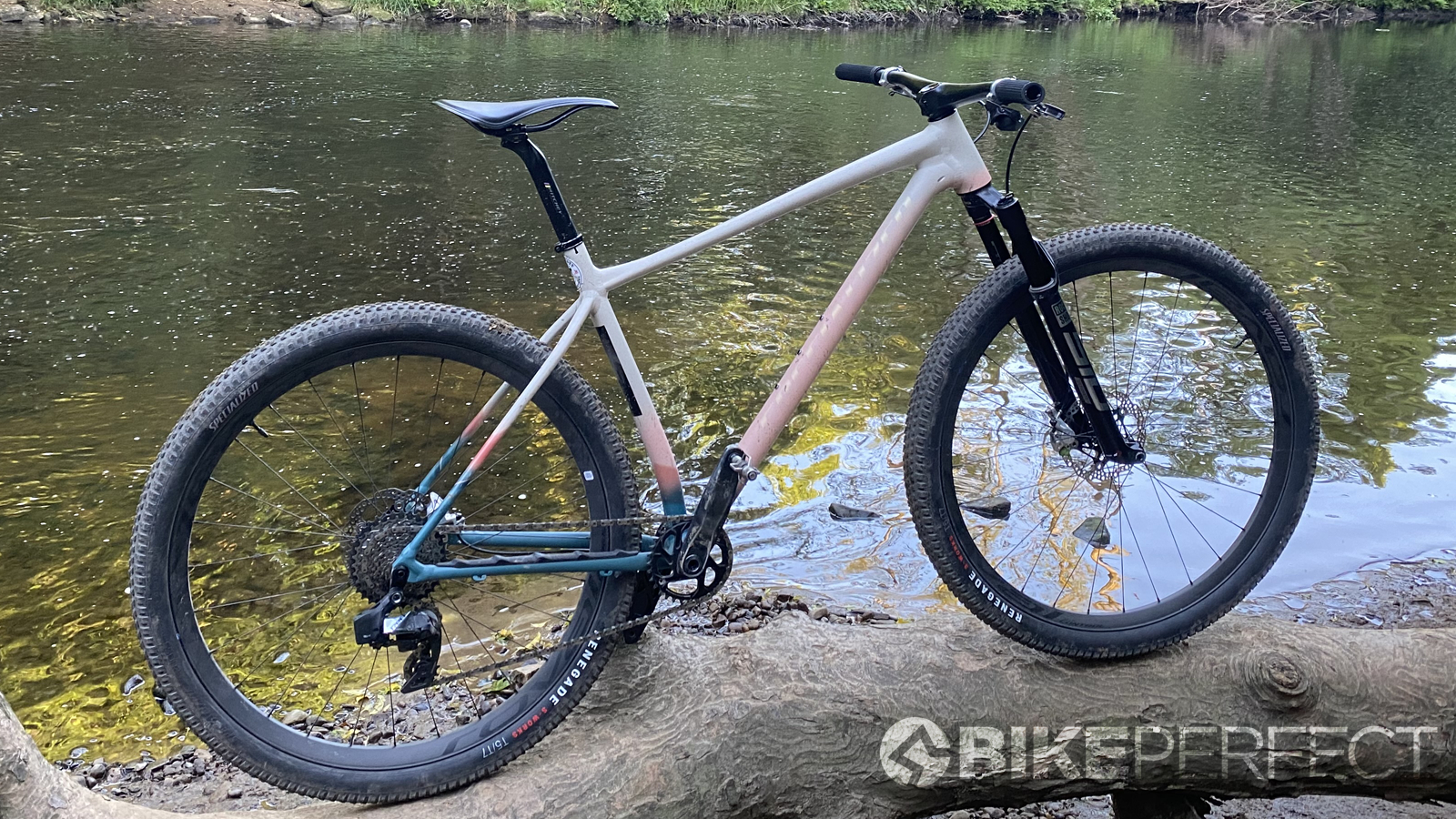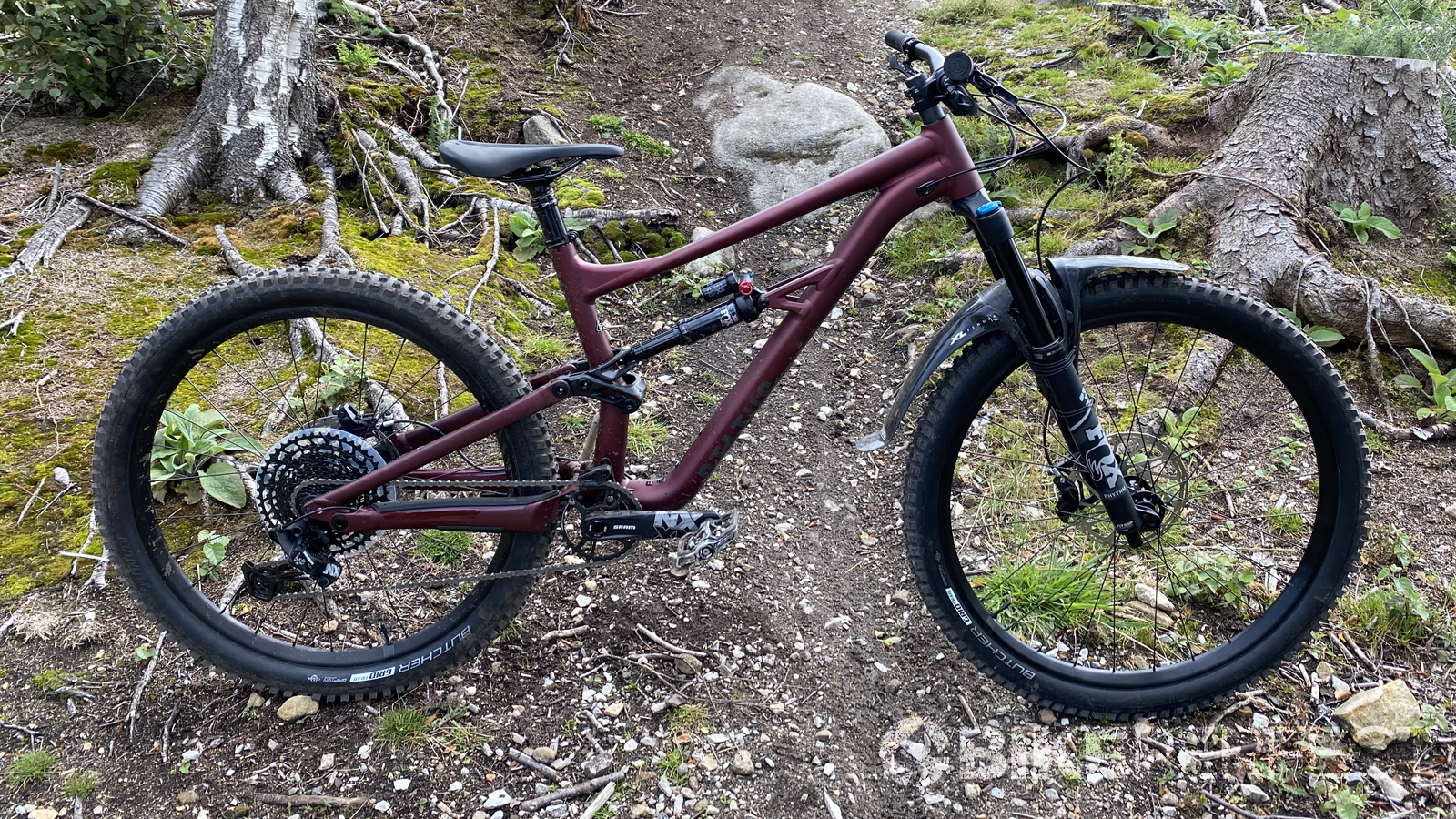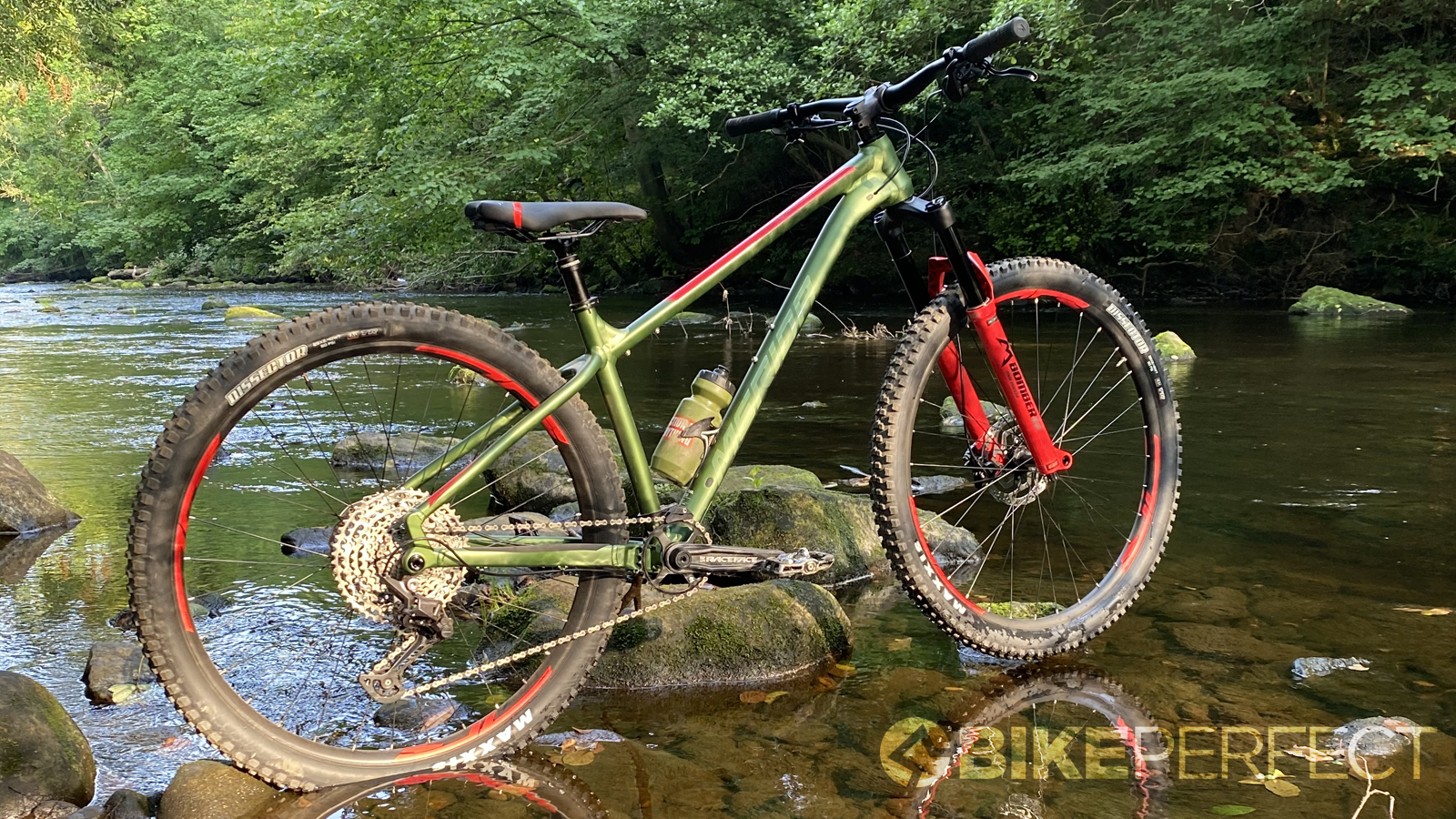Bespoken Word: Alloy ahoy
Aluminum has had somewhat of a resurgence in mountain biking recently, Guy Kesteven takes a look at why metal is back in the mainstream

30 years after it started its rise to become the mass market mountain bike metal of choice, aluminum alloys are re-forging their reputation for excellent performance at an economical price. Guy Kesteven charts their story and why alloy bikes are suddenly becoming really exciting again.
Fat tubes are the future
Aluminum alloy got a massive push towards prominence in early aircraft structures and you’ll often see the phrase ‘aerospace grade’ on bike tubes today. At the same time alloys were being formed into monoplanes and airship skeletons, they were also being formed into tubes and being glued and bolted into lugs by French frame builders for long-distance racing. Performance and weight weren’t much different to contemporary steel frames though, and not much changed for the next 60 years.
Both Gary Klein and Joe Montgomery of Cannondale launched a range of bikes using welded oversized alloy tubes in the 1980s,and these lighter, stiffer bikes suddenly became the benchmark and steel was rapidly relegated to either boutique or bargain-basement brands. Fat-tubed bikes were joined by exotic hollow monocoques beaten, molded and pressed into shape by iconic brands like Mountain Cycle and Foes until big box alloy construction became commonplace.
The rise of fiber
However, carbon fiber had been tracking the tubes-glued-into-lugs technology trajectory of alloy since the 70s and it transitioned into early monocoque molded frames around the same time as aluminum did. Bikes like the Kestrel, Gary Fisher’s Alembic, Formula, Trek’s Y-Bikes and then Scott’s Endorphin and Strike G-Zero showcased its potential stiffness to weight wins. While designs like the infamous Soon To Snap GT ‘STS’ didn’t help gravity adoption, bikes like the Scott Ransom and Santa Cruz’s Carbon Nomad eventually proved it could be everyday enduro tough and while alloy was affordable, carbon was what everyone aspired to. Not just that but as carbon manufacture evolved and we rode bikes harder and harder, some brands like Santa Cruz completely stopped making alloy versions of bikes. They didn’t feel they could match the performance of their carbon-framed bikes and the introduction of features like internal storage by Specialized made it seem even harder for alloy bike frames to keep up.

Chiselling away at carbon
That’s painting an overly pessimistic story for alloy though as some young designers — notably Chris D’Alusio at Specialized — were very keen to bring aluminum back into the performance game while still flexing its pricing advantage. In Chris’s case that involved the development of Smart Weld technology where the tube ends were formed partially closed (think top or bottom of a drinks can) to give them a lot of extra strength and stiffness where it’s needed most. This technique also allows stronger but lighter junctions as well as more compliance in the midsections of the pipes. As a result, bikes like the Specialized Chisel race hardtail aren’t just as light as many mid-price carbon fiber frames but have a superbly sprung ride-feel that’s more lithe and alive than most boutique titanium and steel frames that are significantly heavier. The fact that they cost more for a frame than a complete Chisel bike shouldn’t be ignored either.
Alloy goes aggro
Alloy snuck back into the cult favorite category on the aggro side but in a different way. Building a new mold for a carbon frame just to try a concept is prohibitively expensive, so manufacturers nearly always use alloy for their R&D ‘mules’. A few years back some manufacturers started extending this ‘make a few and see how this crazy idea goes’ approach to their customers too. This coincided with the rise of progressive geometry, so when Ibis went slack and low with its Ripmo AF and Specialized rolled out its radical Stumpjumper EVO, reviewers and riders went crazy. Affordable but totally sorted alloy icons like Sonder’s Transmitter plus-tire hardtail, the legendary Bossnut, and its bigger Sentry brother from Calibre, not only let riders on a budget get bikes they could properly shred, but also meant alloy was once again the people’s champion.

Changing the metal mindset
And while we might be imagining it, that seems to have created a real shift in the mindset of manufacturers now. While it seemed to backfire in terms of actual availability, the Specialized Status mullet shredder came with a unique, influencer-based guerrilla launch strategy that had hardcore riders scouring dealers to score a bike.
Recent high-profile launches from several brands have lost the "well if that’s all you can afford then you’ll have to settle for second best" attitude about alloy. Instead, brands are really keen on pushing how hard they’ve worked to make their metal bikes match their composite ones in terms of features.
Trek freely admits that trying to engineer internal storage on the alloy versions of the Slash nearly broke its engineers when prototype after prototype failed testing, but it got the job done and now it's hyped that everyone gets to hide its trail kit and tubes inside the frame.
Canyon’s new Spectral family covers both alloy and carbon, and you’ll find the same 29, 27.5in or mullet wheel options on the metal 5 and 7 as you will on the CF carbon models, and they look sick too. Specialized has just revealed alloy versions of the Stumpjumper Evo with all the same angle adjust and internal storage options too and like the Spectral they look properly sick. There's even an Elite Alloy version with full Fox Factory suspension in recognition that some shredders aren’t confident in carbon frames.
Alloy and accessorizing
It’s not just bike frames where alloy is getting its rightful respect back either. I’ve been saying for a while that unless you’re an elite XC rider who skims over sharp rocks like a ghost and can make a few saved grams count, hyper-expensive but easily fractured carbon rims can often be a liability. Even if I’m running a set that I’m trying to kill for review purposes, it still makes me flinch to go flat out into a rock garden or water bar descent, and the worst result for me is a walk back to the start, not a hideous repair or replacement bill, or wrangle and wait over a warranty claim.
Even if they’ve got a lifetime warranty that’s generally been achieved by overbuilding to the extent that they’re barely lighter than alloy rims a fraction of the price. Alloy rims can potentially be bent back into shape or nursed home rather than suffering a catastrophic failure. I’m now seeing more and more group test and reviews coming to that conclusion and that’s awesome as it’ll really make people think about what they actually need, not just assuming more expensive is best.
You can apply the same scenarios to carbon cranks and frames as well and it’s also worth noting that the increase in the average weight of bikes plays in the favor of alloy too. Or to put it another way, a couple hundred grams in a component matters much less proportionally on a 15kg bike or 25kg E-bike with 1.2kg tires at each end than it did when tires were 700g and spindly trail bikes weighed 12kg.
Obviously, the cost-benefit analysis can really play in the favor of alloy too. That Fox Factory Stumpy Evo Elite is $3,000 / £3,250 cheaper than the carbon-framed and loaded version with the same suspension. The Spectral AL 5 is just $2,899 / £2,449 and, although it has Shimano Deore rather than SLX, it still has the same key Fox 36 fork and Maxxis tire components as the $4,299 / £3,399 CF 7.

Alloy ahead
For these reasons and more I’m confident that alloy has a bigger part to play in our biking future too. In the short term, I’m as excited to chase down carbon superbikes on an alloy Spectral or Stumpjumper EVO to prove a point in the same way as I have on the Chisel, Sentry, Status, Bossnut and Transmitter before. I’m excited to see the engineering side develop further as 3D and additive printing continue to evolve exponentially. While the subject of the ecology and sustainability of bike building is a whole other super complex can of worms to go into, alloy is a lot more recyclable than carbon composites are. At a time when carbon bike costs are getting ever more ridiculous and cost-related comments online are getting more caustic, you can’t underestimate how important alloy is in providing an enjoyable, fully-functioning entry point to mountain biking. That’s particularly pertinent when many of us are trying to work out how to make our world more inclusive than its current ‘privileged white male’ predominance.
Or to put it another way, alloy is potentially the most important engineering ally mountain biking has.

Guy Kesteven has been working on Bike Perfect since its launch in 2019. He started writing and testing for bike mags in 1996. Since then he’s written several million words about several thousand test bikes and a ridiculous amount of riding gear. He’s also penned a handful of bike-related books and he reviews MTBs over on YouTube.
Current rides: Cervelo ZFS-5, Specialized Chisel, custom Nicolai enduro tandem, Landescape/Swallow custom gravel tandem
Height: 180cm
Weight: 69kg
